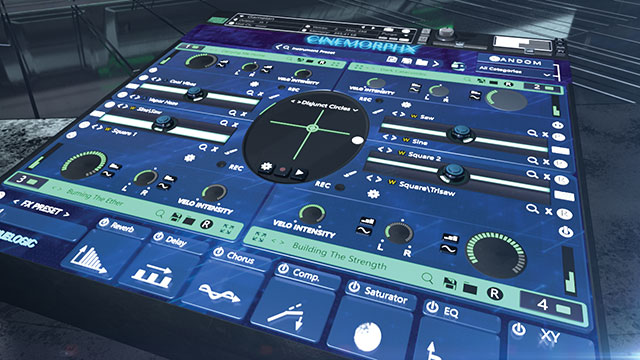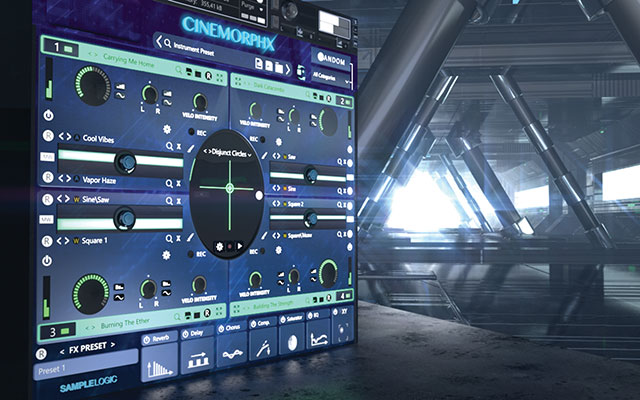Cinemorphx: Powered by N.I.’s Kontakt player.
With the release of Cinemorphx, Sample Logic continues to push the software-synth envelope.
Why? It’s a groundbreaking cinematic virtual instrument that is powered by the Native Instruments Kontakt player. With over 6,000 instruments and 30GB of total content, this is a sound designers dream.
Boasting four soundcore engines and simultaneous playback of up to eight sound sources, Cinemorphx has a rich sonic palette. The samples that make up the sound library are taken from three of Sample Logic’s previous virtual instruments: AIR Expanded, Synergy and Elements. That being said, the presets, features and programmability of Cinemorphx are all brand new.
Set-Up & Sound Library: After downloading and installing the library, I fired up Studio One and launched Cinemorphx. I was pleased with how easy the main page of the GUI was to navigate. The sound library is well organized and the preset browser is categorized in the following manner: soundsources; soundcores; single cores; and multi-cores.
A soundcore consists of two samples or soundsources, and a preset can consist of as little as one single core, or up to four multi-cores. Within each group, the sounds are organized by sound type: atmospheres; instrumentals; loops; and percussives.
The multi-core group contains what are called “one-note combinations.” These presets allow for some very interesting morphing between samples to create dense sonic soundscapes. Each of the four cores has a complete set of programmable parameters, like envelopes, filters and effects. The joystick control in the center of the page allows for real-time morphing of effects and parameters between the different soundcores. The global effects, which reside at the bottom of the page, apply to all of the soundcores.
The second page of the GUI is where the step animator lives, and at first glance, it looks like a normal step sequencer. However, it’s really a step sequencer and an arpeggiator on steroids. Users have the ability to sequence any or all of the multiple cores contained within a sound, and the step animator can be applied to pitch, velocity, pan and note length.
Different steps within a step-sequencer pattern can have their own individual parameters, which is pretty amazing. I love sounds that have motion and some sort of rhythmic pulse or groove. The step animator is a fantastic tool for creating those types of sounds.

I would be remiss if I didn’t mention the randomization feature, which is a great tool for creating some slightly different versions of the included presets, or creating alternate versions of your own presets. Simply select the “R” button from within each core and then click on the big Random button in the upper right hand corner of the GUI.
Cinemorphx will randomly adjust parameters within your preset, resulting in a whole new sound. It’s a very quick and easy process.
Uses: So, where would a virtual instrument like this one find a home in electronic dance music? I can see Cinemorphx being a very valuable tool in creating depth within drops and breakdowns, and adding tension to certain moments in a track. If you’re one of those producers who enjoys building tracks with unique-sounding textures, then Cinemorphx is for you.
Conclusions: The MSRP is $599 for new users, but if you own one legacy product, it’s only $499. If you own two or three legacy products, you will pay $399 and $299, respectively. Congrats to the Sample Logic team on creating what I feel is one of our most exciting new virtual instruments.
If you have any questions for Making Tracks, please send them to djtimes@testa.com.








